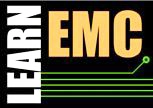EMC Regulations
Virtually every country in the world regulates the electromagnetic compatibility of electronic products marketed or sold within its borders.
United States
In the United States, the Federal Communications Commission (FCC) regulates all commercial (i.e. non-military) sources of electromagnetic radiation. The FCC Rules and Regulations, Title 47, Part 15, specifies limits on the radiation from both intentional and unintentional radiation sources. Sources of unintentional radiation regulated by the FCC include any unintentional radiator (device or system) that generates and uses timing pulses at a rate in excess of 9000 pulses (cycles) per second and uses digital techniques. This includes virtually every product that employs a microprocessor including computers, computer peripherals, electronic games, office equipment, and point-of-sale terminals. Some categories of electronic equipment are specifically exempt from meeting Part 15 requirements including automobiles, appliances, and industrial, scientific or medical equipment. It is illegal to sell or advertise for sale any products regulated under Part 15 until their radiated and conducted emissions have been measured and found to be in compliance.
Most products regulated by Part 15, Subpart B fall into one of two categories. Class A devices are those that are marketed for use in a commercial, industrial or business environment. Class B devices are those that are marketed for use in the home. Class B limits are more stringent than Class A limits as indicated in the tables below. The radiated and conducted EMI test procedures are defined in the ANSI Standard C63.4. The FCC Rules and Regulations, Part 15, only regulate electromagnetic emissions. Currently there are no FCC regulations pertaining to product immunity to electromagnetic fields.
FCC Class A Conducted EMI Limit
FCC Class B Conducted EMI Limit
* Decreases with the logarithm of the frequency.
FCC Class A 10-Meter Radiated EMI Limit
FCC Class B 3-Meter Radiated EMI Limit
EMC requirements for products used by the US military are contained in a document titled MIL-STD-461 . This standard can be applied to a wide range of systems including everything from power tools to workstations. Unlike the FCC Regulations, MIL-STD-461 includes limits for radiated and conducted immunity as well as radiated and conducted emissions.
European Union
Countries in the European Union (EU) regulate both the electromagnetic emissions and the immunity of electronic devices. The Electromagnetic Compatibility Directive (EU Directive 2014/30/EU) basically states that equipment must comply with harmonized standards on EMC and be tested and labeled accordingly. There are a large number of EMC standards pertaining to various types of equipment. The IEC 61000 family of standards cover immunity requirements for most commercial products while the CISPR 32 standard specifies limits on conducted and radiated emissions.
Other Countries
Many other countries either specify compliance with the FCC or EU EMC requirements, or they have their own requirements. Regulations in countries outside of the U.S. and Europe often resemble the FCC and/or EU requirements. Governmental bodies (other than those specified above) that regulate EMC in various countries are listed below:
- Canadian Standards Association
- Finnish Standards Associations SFS
- Standards Australia
- U.S. Food and Drug Administration (FDA) - medical products in the U.S.
- United Kingdom Department for Business, Energy & Industrial Strategy
- VCCI (Japanese EMC Regulation and Certification)
- Verband Deutscher Elektrotechniker e.V. (VDE)
